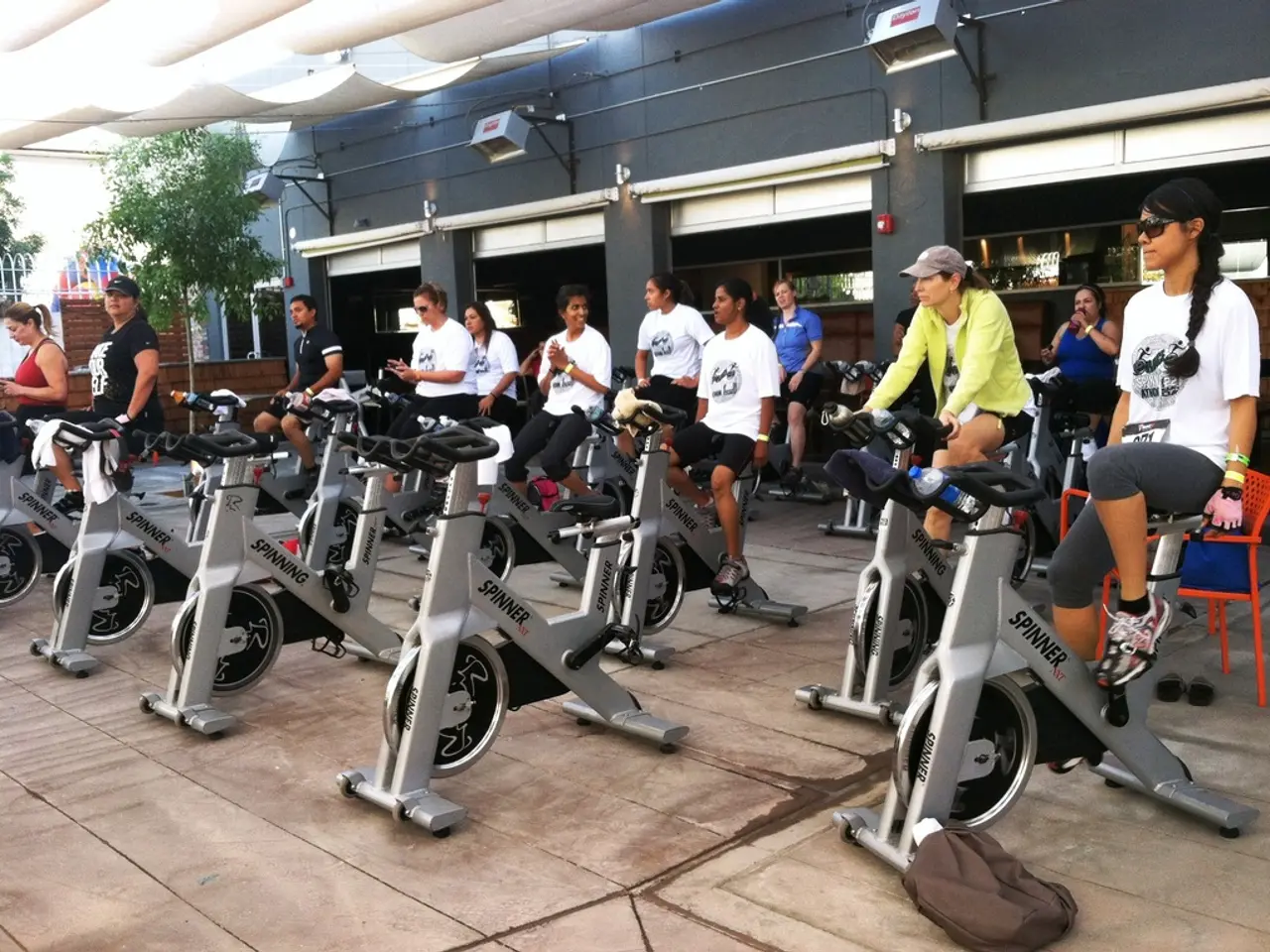Methods for gradual adoption of physical activity by individuals with sedentary lifestyles and obesity
=====================================================================
Starting a fitness journey can seem daunting, but it doesn't have to be. Small changes can lead to significant improvements in health and wellbeing. Here are some key points to consider when embarking on your active lifestyle.
Tracking consistency, rather than performance, provides powerful visual feedback and creates psychological momentum. This means that focusing on doing some activity each day, no matter how small, is more important than striving for a personal best.
For those who are sedentary, even 10 minutes of daily activity can bring about measurable improvements. Within just two weeks, adults may notice improvements in blood pressure, blood sugar regulation, and mood.
For those with weaker core muscles or lower back issues, recumbent stationary bikes can offer a supportive and balance-free exercise option. These bikes also allow for precise resistance adjustments, making them ideal for beginners.
Environmental design plays a crucial role in habit success. Making the desired behavior as frictionless as possible, such as keeping exercise equipment easily accessible, can help to make regular activity a part of your daily routine.
Movement is movement, regardless of whether it is performed all at once or spread throughout the day. Three 10-minute bursts of activity throughout the day can deliver the same cardiovascular and metabolic benefits as a single 30-minute workout.
Walking, a simple yet consistently beneficial activity, is often overlooked. Regular walkers report better mood, reduced anxiety, improved sleep, and greater mental clarity.
Moderate-intensity exercise, as suggested by the Centers for Disease Control and Prevention, is moving at a pace that makes you slightly breathless but doesn't leave you doubled over. Shortness of breath during exercise should be manageable, allowing for speaking in short sentences.
The resistance adjustments on modern stationary bikes are incredibly precise, allowing for starting with almost no resistance and gradually increasing intensity as fitness improves. This means that the same equipment can serve someone managing 5 minutes of gentle pedaling as well as someone working toward 45-minute sessions.
Exercise routines can be linked to existing habits for easier implementation (habit stacking). For example, you could start by walking for 10 minutes after dinner each night.
The World Health Organization (WHO) has formulated the recommended weekly amount of moderate to intense physical activities. According to their guidelines, adults should aim for at least 150 minutes of moderate-intensity exercise each week. However, this can be divided however one's life allows.
Regular exercise is not about becoming an athlete, but about becoming someone who moves regularly, making physical activity part of your self-concept.
For people with obesity, walking burns significantly more calories per minute than it would for lighter individuals. Water-based exercise, such as walking in chest-deep water, can provide excellent cardiovascular exercise while being extraordinarily gentle on joints.
Finally, it's important to remember that sustainable fitness is about gradual, consistent improvement over months and years. Recovery between exercise sessions is when your body actually improves, preventing chronic fatigue. Take it one step at a time, and you'll be on your way to a healthier, more active lifestyle.
Read also:
- High recovery rate for over 90% of patients, asserts the head physician of Almaty's 32nd polyclinic, regarding mobile treatment groups.
- Bee colonies in Zirndorf city have been affected by American foulbrood - a designated restriction zone has been established - no immediate threat to local residents.
- Federal Health Care Blueprint for 2026 Revealed by OPM Outlining Key Strategies and Objectives
- Unveiling the Undiscussed Issues of Earbuds: Revealing the Silent Reality





